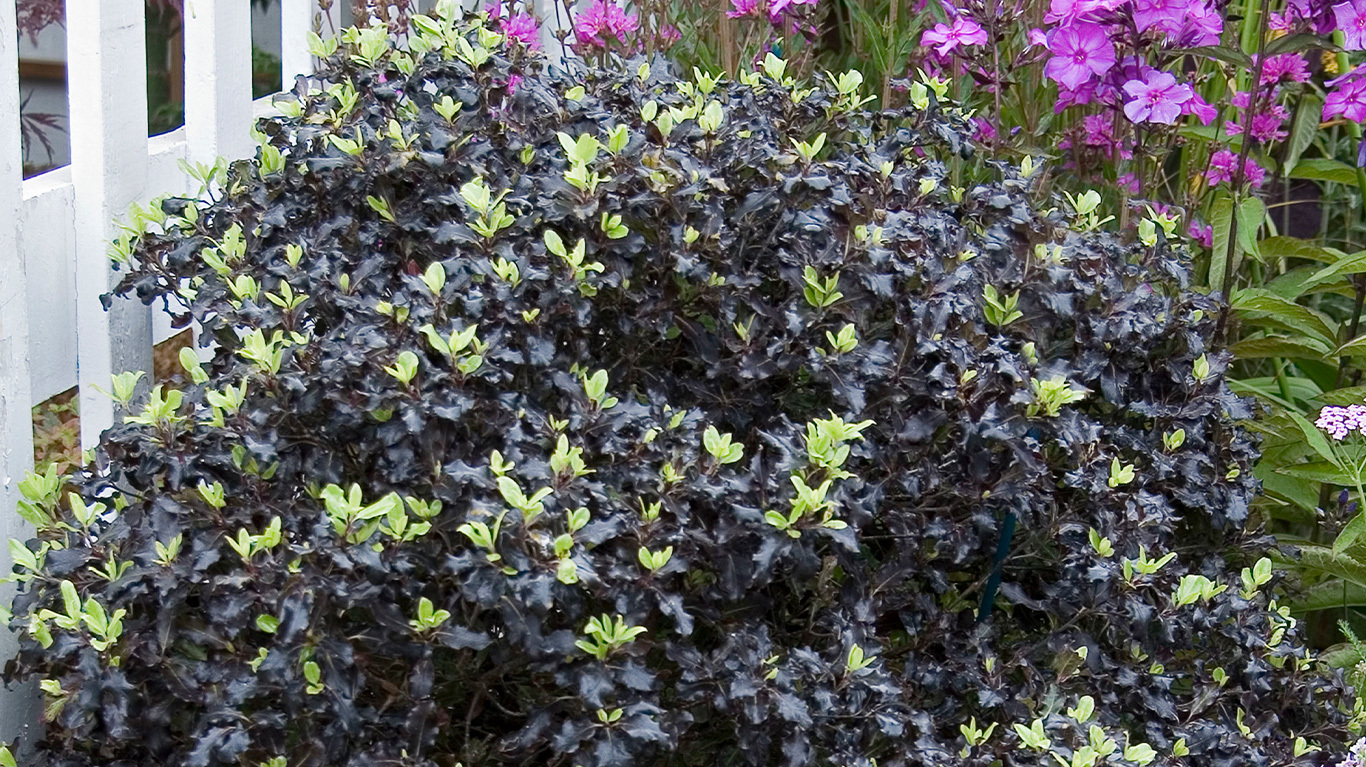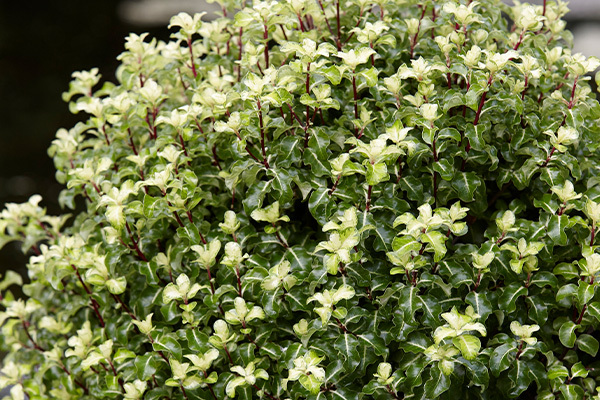
What We've Included
When to Plant | Where to Plant | How to Plant | When to Water | Mulching | Protecting Plants in Winter | Pruning | Propagating | Common Diseases & Pests | When will they Flower?
When to Plant
Pittosporum shrubs can be grown at any time of the year if the soil isn’t frozen or waterlogged. Container shrubs purchased in summer should be planted out as soon as possible and watered regularly to help them settle in.

Where to Plant
Plant your Pittosporum in full sun or partial shade, sheltered from harsh winds and frost. Sun can encourage the variegation to develop on leaves, so it’s best to position these varieties in a sunny spot in the garden. The size of the variety will determine where to plant them. Some varieties grow quite large and can be used as hedging, and some can be medium to small sizes, which can be grown in a border or container.
How to Plant
Planting Pittosporum from pots into borders
Pot-grown plants are incredibly easy to plant and grow. Whether you’re growing them directly outside into the border or into a container, our pot-grown plants are a breeze from the moment they arrive.
- Prepare the soil before planting with plenty of organic matter, like compost, before planting. This helps the soil to retain moisture, helping your Pittosporum thrive.
- Water the plant well before planting it in place so that the stress on the plant is minimalised.
- Dig a hole in the border that’s twice the width of the root system, and as deep as it was in its pot.
- Wedge in the plant by adding soil to the gaps in the hole, firming down the surface to ensure it’s in place. - Water in well, and you’re done!
Planting Pittosporum into Containers
- Choose a container that is slightly larger than the original container.
- Fill the pot with your compost of choice.
- After two or three years, the roots fill the pot, which means it’s time to repot it into a slightly larger container in spring.
When to Water
For the first few years, water pittosporum shrubs in dry spells throughout spring and summer. Once they have established, they are drought tolerant and won’t need watering as often, except for particularly dry spells in summer to help produce healthy growth. Large varieties, like hedging, can take longer to establish so ensure you water them regularly for up to 5 years.

Mulching
Mulch your shrub with organic matter made up of garden compost, or rotten manure, to help the plant retain its moisture. Ensure to leave a circle free of mulch around the immediate base of the plant to prevent rotting.
Protecting Plants in Winter
Most varieties are hardy, especially in mild areas of the country. Some varieties, however, are less hardy and may need winter protection to ensure they’re not damaged by frost. Container plants can be moved into a greenhouse or conservatory. You can also place them somewhere sheltered, like next to a south-facing wall, covering it with fleece at night. Border plants can also be wrapped in fleece, especially when frost is predicted.
Pruning
Shrubs in the border can be pruned in mid-spring by cutting shoots that sprout away from the outline of the foliage. You can also trim off any winter-damaged shoots to tidy it up a bit. Hedges can also be pruned from mid-spring through to late summer. Trim two or three times during the season, with the last cut in late summer. To encourage an unruly and overgrown shrub to thrive once again, pittosporums can be pruned hard in the spring. Add a fertiliser like fish, blood and bone around the shrub’s base to encourage regular growth.

Propagating
Pittosporums are best propagated by taking semi-ripe cuttings in late summer and early autumn. You can also collect the seeds from capsules, repotting these indoors and planting them outside in autumn, giving them time to establish roots before spring.
Common Diseases & Pests
Pittosporums can be usually pest and trouble-free. However, they can be susceptible to powdery mildew, which can affect the leaves but won’t need controlling. They can also be troubled by leaf drop. This is where the plant loses older leaves inside the canopy, due to a lack of sunlight. This is normal, but if a lot of leaves drop within a short space of time, it could be due to more worrying reasons such as improper planting conditions like waterlogged soil. This can be remedied by improving the drainage of the plants, and reducing watering.

When will they Flower?
Pittosporums can produce tiny flowers from spring to early summer. These are soon followed by black seeds, which can be collected to propagate your plant. This general timeframe may differ from plant to plant, so double-check the information given with your plant to know for sure.
